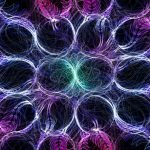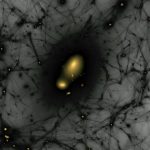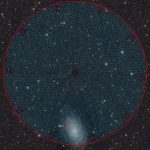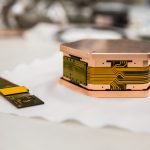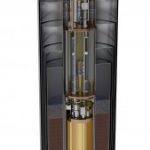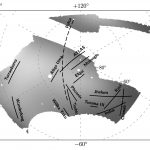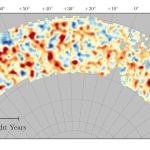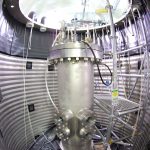In an article submitted to Physical Review D, CPC members Noah Kurinsky and Gordan Krnjaic collaborate with Dan Baxter (KICP) and Yoni Kahn (UIUC) to present a novel interpretation of excess events observed at various low-threshold dark matter searches. They found that the anomalous results across various detectors operating in dramatically different experimental conditions could… More »
dark matter
Over the past five years, the Dark Energy Survey, a DOE-funded project led by Fermilab, has revolutionized our view of small satellite galaxies. DES discovered a large number of tiny galaxies close to the Milky Way’s largest satellites, the Magellanic Clouds, suggesting that multiple galaxies may have been captured by the Milky Way at the… More »
The Dark Energy Spectroscopic Instrument seeks to further our cosmic understanding by creating the largest 3-D map of galaxies to date. Below is a press release issued by Lawrence Berkeley National Laboratory announcing first light for this extraordinary instrument. The U.S. Department of Energy’s Fermi National Accelerator Laboratory is a key player in the construction of… More »
The Department of Energy has awarded Fermilab and University of Chicago scientist Josh Frieman $1 million over three years as part of the inaugural Office of Science Distinguished Scientist Fellowship program. Office of Science distinguished scientist fellows were chosen from nominations submitted by nine U.S. national laboratories. Frieman is one of only five scientists selected,… More »
Fermilab is providing technology and expertise for the SuperCDMS SNOLAB project, which will expand the hunt for dark matter to particles with properties not visible to any other experiment. The U.S. Department of Energy Office of Science and the National Science Foundation have approved funding and start of construction for the SuperCDMS SNOLAB experiment, which… More »
New result draws on 30 years of research and development and begins the definitive search for axion particles Forty years ago, scientists theorized a new kind of low-mass particle that could solve one of the enduring mysteries of nature: what dark matter is made of. Now a new chapter in the search for that particle… More »
Also announces discovery of eleven stellar streams, evidence of small galaxies being eaten by the Milky Way At a special session held during the American Astronomical Society meeting in Washington, D.C., scientists on the Dark Energy Survey (DES) announced today the public release of their first three years of data. This first major release of… More »
The world will soon be celebrating the hunt for the universe’s most elusive matter in a series of Dark Matter Day (www.darkmatterday.com) events planned in over a dozen countries. The events, planned on and around the formally recognized day on Oct. 31, 2017, will engage the public in discussions about dark matter, which together with… More »
New result rivals precision of cosmic microwave background measurements, supports view that dark matter and dark energy make up most of the cosmos Imagine planting a single seed and, with great precision, being able to predict the exact height of the tree that grows from it. Now imagine traveling to the future and snapping… More »
The PICO-60 detector was originally called “COUPP-60,” with COUPP standing for “Chicagoland Observatory for Underground Particle Physics.” It was designed and built by Fermilab in collaboration with the University of Chicago and Indiana University, South Bend. Work began at Fermilab in 2005, and, after extensive testing, the detector was moved to SNOLAB in 2012. “We’ve been… More »










